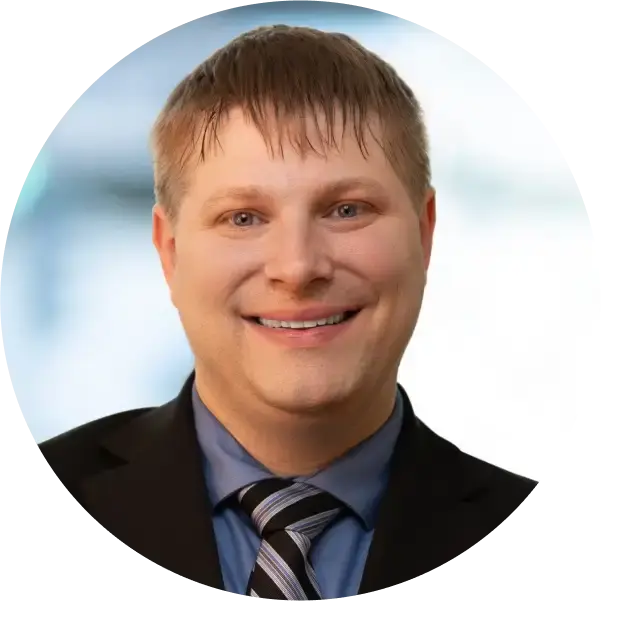Q: What types of client challenges are you solving at BRG?
Matt Drews: A large part of what we do at BRG is provide bespoke modeling solutions for our clients. Many of them aren’t large, integrated utilities — they might be small or isolated utilities or large industrial consumers with private transmission networks. These clients often have very specific asset mixes, operational control, and goals that aren’t easily addressed by off-the-shelf tools.
That’s where SAInt really stands out. I’ve built several highly customized power system models in SAInt, each focused on solving the unique challenges our clients face. It’s also an excellent tool for bulk power system modeling. We maintain models of all the major interconnections in North America, as well as others when needed. What I really appreciate about SAInt is its versatility — it can handle both the highly specific, detailed problems our clients bring to us, and the large-scale, bulk system studies. And it uses the same platform and training for both, making it incredibly efficient for my team.
Q: What would you say makes your team’s approach or expertise stand out to your clients? What’s unique about the value you provide?
Matt Drews: I think a lot of our clients come to us because we have experience modeling very complex systems and a deep operational understanding of how specific assets can work together. Compared to some of our competitors, our clients often approach us with highly specific, bespoke problems — situations where they need to carefully consider detailed operating limits or figure out how to reliably serve load with a highly variable energy mix.
We help them optimize resources like storage and thermal generation to deliver power cost-effectively while lowering carbon emissions. These kinds of customized, complex system studies are where we really differentiate ourselves.
Q: How does SAInt enable you to solve challenges for your clients?
Matt Drews: Many of my clients are looking for power supply solutions, with a strong focus on medium- to long-term planning. That means I need tools that can model systems very different from what exists today — or even what’s possible today. SAInt has been invaluable in that space. I’ve used it for deep decarbonization studies, exploring how to actually operate low- or zero-carbon systems in detail.
I’ve also used SAInt to run renewable integration studies, bulk system modeling, and to help clients who may not have full operational control understand how their assets fit into the market and how to optimize their value.
Q: Now that you have been working with SAInt for almost a year, what would you say is different or unique about SAInt?
Matt Drews: There are three things that really make SAInt stand out to me. First, it’s the best tool I’ve used for integrating renewable generation profiles. It’s incredibly helpful to pull in data from often remote or hard-to-access areas and help clients understand the unique dynamics of building assets in those locations — especially when it’s a one-of-a-kind project. SAInt handles that better than any other tool I’ve worked with.
Second, compared to other models, SAInt is much more streamlined. It has fewer variables, which makes it faster and easier for new team members to learn — especially for those new to production cost modeling. I actually read the entire SAInt documentation in a single day, something I’ve never been able to do with any other model that offers this level of power and flexibility.
Lastly, the ability to apply custom constraints and model unique, client-specific problems has consistently helped me find the right solutions. And beyond the software itself, the customer service I’ve received from encoord has been better than any competitor I’ve worked with.
Q: How has the experience of collaborating on a modeling project with a colleague been?
Matt Drews: One thing I really like about SAInt is how easy it is to collaborate on projects. It’s simple to move between the data templates and the actual database structure that runs the model. Everyone on our team has a local copy of SAInt on their laptops, and we’ve been able to seamlessly share and pass databases between our workstations without any issues.
Q: How has your experience been with SAInt’s performance, especially when working on larger, more complex models?
Matt Drews: I’ve found SAInt to be as competitive as — or better than — any other model I’ve used. One feature I really appreciate is that it uses Gurobi by default, which is a transparent, fast, and well-known optimization solver. Many competing models rely on built-in heuristics, which can slow down runtimes and reduce transparency.
Even with our largest, most complex problems, we’ve had no significant issues with solving times. In fact, in many cases, the results have been surprisingly — and delightfully — fast, allowing us to deliver results to clients efficiently and confidently.
Q: How would you describe the collaboration between your team and encoord since the partnership started?
Matt Drews: I was especially impressed by how well we were able to customize our training with the encoord team. SAInt is a powerful, comprehensive software, but we use it for some very specific applications, and our team came into the training with a unique set of experiences. It was easy to work with encoord to design a training program that was tailored to our needs — and it was really successful.
Since then, our experience has been just as positive. The encoord team has been extremely responsive and helpful in answering questions and supporting us along the way. They’ve been easy to work with, open to feedback, and very receptive to ideas for future updates. It’s been a productive and collaborative partnership from the start.
Q: Is there anything else you would like to share?
Matt Drews: One thing I really appreciate about SAInt is its flexibility. Even if something isn’t directly built into the platform — and honestly, I like that, because it keeps the program manageable and easy to understand — it’s usually very simple to customize. I’ve often been able to use one object class to represent something else or create custom constraints to solve unique problems.
The encoord team has been incredibly helpful whenever we’ve run into challenges figuring out how to model something specific. Even though SAInt has fewer object classes and properties than most competing models, with that support, we’ve been able to successfully model over 98% of the scenarios we’ve needed. And because of its simplicity, it’s much easier to understand the available options and train new team members quickly.
About Matt
Associate Director – Energy & Climate
Matthew Drews is an associate director in BRG’s Energy & Climate practice. He is a strategy and finance professional with broad experience helping clients understand and respond to rapidly changing energy markets and regulations.
He leverages deep understanding of power and fuels markets and experience in climate strategy to lead strategic advisory projects for energy companies and stakeholders and due diligence and financing support efforts for energy-asset transactions.
Mr. Drews’ areas of expertise include wholesale power markets, power generation portfolio strategy, generator dispatch modeling, due diligence transaction support, renewable fuels policy and analysis, net-zero studies, energy transition strategy, corporate finance, mergers and acquisitions, and energy storage modeling. As an energy, finance, and modeling expert, he has worked on investment advisory, planning, finance, and strategy projects for numerous major US, Canadian, and international clients and employers on a range of energy assets, including renewable power, natural gas, coal, and nuclear power generation, power transmission and distribution systems, energy storage facilities, oil and gas production facilities, liquefied natural gas (LNG) facilities, coal mines, oil refineries, and renewable fuels facilities.
Mr. Drews previously worked in finance for an oil and gas major, focusing on mergers and acquisitions, financial forecasting and analysis for a business unit, financial transaction support, and energy transitions strategy. He holds undergraduate degrees in applied mathematics, economics, and history and an MBA in finance.
Opinions in this interview are based on Matt Drews’ personal experience and do not reflect BRG’s corporate positions.
Watch the video recap here.



